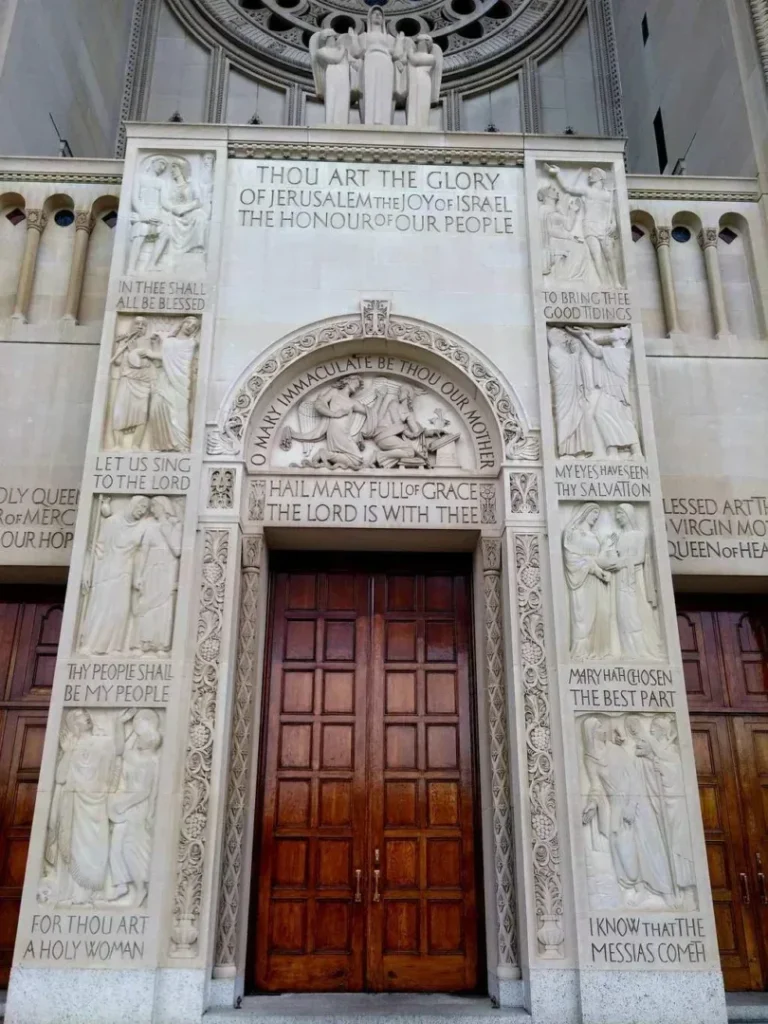Remember those big hairdos, neon colors, and shoulder pads? Well, it seems like the 80s are making a comeback in the fashion world. From the runways to the streets, we are seeing a resurgence of 80s-inspired trends that are taking the fashion industry by storm. From bold prints and vibrant colors to oversized accessories and power suits, the 80s are back in a big way. So, if you’re a fan of retro style or simply want to add a touch of nostalgia to your wardrobe, it’s time to channel your inner Madonna or Michael Jackson and embrace the 80s fashion revival.

This image is property of images.unsplash.com.
Rise in Nostalgia Culture
Defining nostalgia culture
Nostalgia culture refers to the phenomenon of society’s longing for past eras and the revival of trends, styles, and elements from those times. It is essentially a sentimentality towards the past, evoking positive emotions and a desire to relive or reconnect with certain aspects of previous decades. This cultural wave has gained significant momentum in recent years, with the 80s being a particularly popular period of nostalgia.
Role of social media in spreading nostalgia
Social media platforms have played a crucial role in the spread of nostalgia culture. Platforms like Instagram, Facebook, and Twitter have enabled individuals to curate their personal spaces and share content that reflects their interests and preferences. This has given rise to a digital ecosystem where nostalgia can thrive, as people share memories, images, and stories from the past. Through hashtags, throwback posts, and dedicated nostalgia accounts, social media has effectively become a breeding ground for the 80s revival.
Nostalgia in advertising and marketing
Marketers and advertisers have recognized the power of nostalgia in captivating audiences and forming emotional connections with consumers. The 80s, with its vibrant and distinctive aesthetic, has become a goldmine for brands seeking to tap into this nostalgia culture. From using iconic 80s logos and color schemes to reviving classic advertisements and jingles, marketers are capitalizing on the cultural cache of the era. By evoking nostalgia, brands are able to create a sense of familiarity and nostalgia-driven purchases among consumers.
80s Fashion Revival
Popular 80s styles making a comeback
The revival of 80s fashion has been noticeable in recent years, with many iconic styles making a comeback. Shoulder pads, neon colors, oversized blazers, and acid-washed jeans are just a few examples of the fashion trends that have gained popularity once again. Additionally, accessories like scrunchies, fanny packs, and hoop earrings are being embraced by fashion enthusiasts who want to embody the bold and daring spirit of the 80s.
Influential fashionistas promoting 80s trends
Influential figures in the fashion industry have played a significant role in promoting and popularizing 80s trends. Designers such as Marc Jacobs, Jeremy Scott, and Balenciaga have incorporated 80s-inspired elements into their collections, drawing attention to the nostalgia-fueled fashion revival. Celebrities like Rihanna, Lady Gaga, and Billy Porter have also embraced the 80s aesthetic, further cementing its place in mainstream fashion culture.
Impact of shows like ‘Stranger Things’
The popular Netflix series ‘Stranger Things’ has been instrumental in reigniting interest in 80s fashion. Set in the 1980s, the show authentically captures the fashion, music, and overall atmosphere of the era. The characters’ style, particularly Eleven’s iconic pink dress and Dustin’s vibrant retro shirts, has sparked fashion trends among both fans of the show and fashion enthusiasts. ‘Stranger Things’ has successfully merged nostalgia and pop culture, contributing to the 80s revival in the fashion industry.
Music Industry’s Rediscovery of the 80s
80s influences in contemporary music
The music industry has been heavily influenced by the sounds and styles of the 80s. Artists today often incorporate elements reminiscent of the iconic synth-pop, new wave, and glam rock genres that dominated the 80s music scene. The use of synthesizers, electronic beats, and catchy hooks reminiscent of the era has become increasingly popular. Artists like The Weeknd, Dua Lipa, and Bruno Mars have successfully revived the 80s sound, infusing it into their own modern music.
Remakes of classic 80s hits
Another way the music industry has embraced the 80s revival is through remakes and covers of classic hits from the decade. These remakes provide a fresh take on beloved songs, introducing them to a new generation of listeners while simultaneously catering to the nostalgia of older audiences. From Whitney Houston’s “Higher Love” being reimagined by Kygo to Miley Cyrus’ cover of “Heart of Glass” by Blondie, these remakes breathe new life into timeless tunes.
Tools and software recreating 80s sound
Advancements in technology have made it easier than ever for musicians to recreate the distinct sound of the 80s. Software synthesizers and plugins allow artists to emulate vintage synthesizers and drum machines, capturing the essence of the era’s music. This has democratized the ability to create 80s-inspired music, resulting in a proliferation of artists and producers incorporating the nostalgic sound into their tracks. The accessibility of these tools has contributed to the widespread presence of the 80s sound in contemporary music.
The 80s in Modern Cinema and Television
80s themed films and series
In recent years, there has been a surge in films and television series set in or inspired by the 80s. Productions like “Ready Player One,” “It,” and “The Goldbergs” transport viewers back to the 80s, immersing them in the culture and atmosphere of the era. These nostalgic narratives tap into a collective longing for a simpler time, where technology was less invasive and life seemed more carefree. By capitalizing on this nostalgia, filmmakers and showrunners are able to create engaging storytelling experiences.
Successful 80s remakes and reboots
Hollywood has also capitalized on the popularity of the 80s by remaking or rebooting successful films and TV shows from the era. Films like “Ghostbusters” and “Blade Runner” have been given new life with contemporary adaptations, allowing younger generations to experience these classic stories while appealing to the nostalgia of older audiences. The success of these remakes and reboots highlights the enduring appeal of 80s culture and its ability to resonate with today’s viewers.
Incorporation of 80s pop culture references
Beyond explicitly 80s-themed productions, modern cinema and television often incorporate subtle or overt references to 80s pop culture. Easter eggs, nods, and homages to iconic films, music, and fashion from the era are scattered throughout various TV series and movies. These references serve as catalysts for nostalgia, sparking recognition and fond memories among viewers. By seamlessly blending the past with the present, creators tap into the cultural currency of 80s pop culture, enhancing the audience’s viewing experience.

This image is property of images.unsplash.com.
80s Design Art on Today’s Market
Revival of 80s graphic design trends
The distinct graphic design aesthetic of the 80s, characterized by bold colors, geometric shapes, and futuristic motifs, has experienced a widespread revival. From album covers to advertising campaigns, the influence of 80s design can be seen across various mediums. Designers and artists today often draw inspiration from the vibrant and energetic visual language of the era, incorporating it into their work to capture attention and evoke feelings of nostalgia.
Branding and nostalgia
Brands have recognized the power of nostalgia in forging connections with consumers and have incorporated 80s design elements into their branding. Logos and packaging featuring vibrant neon colors, retro typography, and pixel art reminiscent of early video games have become increasingly prevalent. By tapping into the nostalgia associated with the 80s, brands are able to create a sense of familiarity while standing out in a crowded market.
Popularity of 80s style video games
The resurgence of 80s design has also extended to video games, with a growing number of independent developers embracing the retro aesthetic. Pixel art, chiptune soundtracks, and gameplay mechanics reminiscent of classic arcade games have become a popular choice among both developers and gamers. By recreating the look and feel of 80s video games, modern releases tap into the nostalgia of older gamers while introducing younger generations to a beloved era of gaming history.
Moving Beyond the Screen: 80s in Architecture
Exploration of 80s interior design trends
The 80s revival has reached beyond the digital and creative industries and has made its way into architecture and interior design. Elements such as bold colors, geometric shapes, and mirrored surfaces are being incorporated into contemporary spaces, evoking the spirit of the 80s. Theatrical lighting, glass blocks, and angular furniture were hallmark features of 80s interior design, and they are now being embraced by designers seeking to bring the era’s distinctive aesthetic into modern living spaces.
80s influences in modern architecture
Not only is 80s interior design being revived, but the era’s architectural style has also found its way back into modern designs. Buildings with postmodern influences, characterized by asymmetric facades, colorful accents, and playful shapes reminiscent of the era, have been springing up around the world. From the bold lines of the Deconstructivist movement to the incorporation of neon lighting, architecture is embracing the 80s revival as a way to infuse excitement and character into modern urban landscapes.

This image is property of images.unsplash.com.
80’s Style Technology Making a Comeback
Return of Retro Gadgets
The resurgence of 80s nostalgia has seen the return of retro gadgets that pay homage to the technology of the era. Analog cameras, vinyl record players, and cassette tape players have experienced a resurgence in popularity as individuals seek a break from the digital age. These retro gadgets not only offer a tactile and nostalgic experience but also serve as stylish accessories that reflect an appreciation for a bygone era.
Nostalgia-based marketing for technology
Consumer technology companies have recognized the consumer appeal of nostalgia and have embraced it in their marketing strategies. From smartphone apps that emulate the look of vintage computers to retro-inspired video game consoles, brands are leveraging nostalgia to attract consumers. By combining modern functionality with the aesthetics of the 80s, these technologies appeal to both the desire for nostalgia and the need for contemporary convenience.
Case study: popularity of Mini NES
One notable example of the 80s revival in the technology industry is the release of the Mini NES. This compact replica of the classic Nintendo Entertainment System, originally released in the 1980s, captured the hearts of nostalgic gamers and sold out rapidly upon its release. The success of the Mini NES demonstrated the demand for 80s-inspired technology and the enduring appeal of classic gaming experiences.
Car Industry Embracing the 80s
Manufacturers releasing 80s style vehicles
Automobile manufacturers have also embraced the 80s revival by releasing vehicles that pay homage to the design aesthetics of the era. Retro-inspired models featuring boxy shapes, vibrant colors, and angular lines reminiscent of iconic 80s cars have captured the attention of car enthusiasts and nostalgia seekers alike. These vehicles bridge the gap between past and present, allowing individuals to experience the excitement of 80s automotive design with the modern performance and technology of today.
Retro car models: a passing trend or here to stay?
While the popularity of retro-inspired car models suggests a significant interest in the 80s aesthetic, it is worth considering whether this trend will stand the test of time. Nostalgia-driven design is cyclical, and consumer tastes are ever-evolving. It remains to be seen whether the appeal of the 80s in the automotive industry will endure or if it will give way to new design trends in the future.
Impact of the 80’s Revival on Pop Culture
Changing televised entertainments
The 80s revival has had a profound impact on the landscape of televised entertainment. From nostalgic reboots of beloved 80s shows like “Stranger Things” to new series set in the 80s, such as “GLOW” and “The Americans,” the era’s influence is prevalent. This resurgence in 80s-themed content has not only captivated audiences but also sparked conversations about the cultural significance of the decade, encouraging viewers to reflect on the past and appreciate its enduring legacy.
Influence on video gaming industry
The world of video games has also been greatly influenced by the 80s revival. Retro-inspired games with pixel art graphics and gameplay mechanics reminiscent of classic arcade and console games have gained significant popularity. Additionally, the incorporation of 80s pop culture references in contemporary video games, such as “Grand Theft Auto: Vice City” and “Far Cry 3: Blood Dragon,” allows players to immerse themselves in a nostalgic gaming experience. The impact of the 80s on the video gaming industry highlights its lasting appeal and the influence it continues to exert on modern pop culture.
Fashion as a channel for 80s revival
Fashion has become a primary channel through which the 80s revival has permeated pop culture. From red carpets to street style, celebrities and influencers have fully embraced the 80s aesthetic, donning iconic looks and reviving trends from the era. This fashion-forward approach has trickled down to mainstream culture, with individuals of all ages seeking to incorporate 80s-inspired styles into their wardrobes. The impact of the 80s revival on fashion culture demonstrates the lasting influence of the era and its ability to shape contemporary pop culture.
The Role of Social Media in the 80’s Comeback
Social media platforms spreading nostalgia
Social media platforms have played a pivotal role in fueling the 80s comeback by providing a platform for users to share and engage with nostalgic content. From sharing old photos and videos to participating in hashtag challenges like #ThrowbackThursday, social media allows individuals to actively participate in nostalgia culture. These platforms create a sense of community and shared experience, enabling the collective celebration and preservation of 80s culture.
Generation Z’s fascination with the 80s
Surprisingly, it’s not just those who experienced the 80s firsthand who are contributing to its resurgence. Generation Z, born after the 80s, has shown a strong fascination with the era. This interest can be attributed in part to the allure of retro aesthetics, as well as a desire to connect with the past in an increasingly fast-paced and digitized world. Generation Z’s embrace of the 80s further solidifies its status as a cultural milestone with cross-generational appeal.
Influence of online communities in fueling the 80s revival
Online communities and forums dedicated to celebrating and discussing the 80s have played a significant role in fueling the revival of the era’s culture. These communities serve as digital gathering places where individuals can share their love for 80s music, fashion, movies, and more. The collective enthusiasm and knowledge within these spaces contribute to the preservation and proliferation of 80s pop culture, ensuring its continued relevance and impact in the digital age.
In conclusion, the 80s revival has become a prominent cultural phenomenon with far-reaching impact. From fashion and music to cinema and architecture, the influence of the 80s can be seen and felt across various industries and facets of modern life. The role of social media and technology in spreading nostalgia culture cannot be understated, as platforms and tools have facilitated the revival and preservation of 80s aesthetics and experiences. Whether it’s through fashion trends, nostalgic music, or design choices, the 80s revival has reshaped pop culture and left an indelible mark on society.

